A Comprehensive Comparison of Bluetooth and UWB (Ultra-Wideband) Technologies: A Guide to Precise Positioning
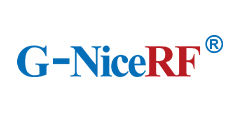



The rapid development of the indoor positioning industry and the quick expansion of the market are closely related to the diversification of positioning technologies. Common indoor positioning technologies include Bluetooth positioning, WiFi positioning, UWB (Ultra-Wideband) positioning, and ZigBee positioning, among others. In recent years, indoor navigation and positioning have become increasingly common, such as in underground parking lot vehicle location, smart guide systems in hospitals and nursing homes, and asset and item tracking in warehouses. Currently, the most common positioning technologies on the market are Bluetooth-based and UWB-based (Ultra-Wideband) technologies. Today, we will mainly introduce the differences between NiceRF's Bluetooth positioning and UWB positioning.
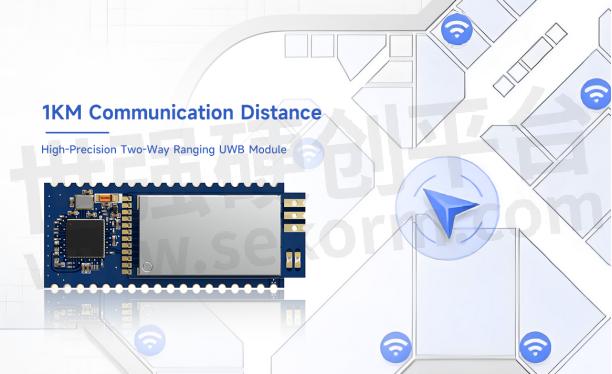
What are the differences between Bluetooth positioning and UWB positioning, and what are the main distinctions?
Supported wireless protocols
Bluetooth positioning is based on the standard Bluetooth 4.0-5.2 protocols UWB (Ultra-Wideband) positioning uses UWB wireless communication technology, which supports extremely wide bandwidth (typically over 500 MHz). This protocol is designed for high precision and low latency communication, providing reliable performance in complex environments.
UWB3000F27 and UWB3000F00 adhere to IEEE802.15.4-2015 and IEEE802.15.4z (BPRF mode) standards, while UWB650 follows the IEEE 802.15.4-2020 Standard protocol.
Positioning Principles and Accuracy
Bluetooth Positioning: Bluetooth positioning primarily relies on RSSI (Received Signal Strength Indicator) measurements to estimate the distance between devices by measuring signal strength. NiceRF uses more advanced positioning methods, employing Bluetooth Angle of Arrival (AoA) and Angle of Departure (AoD) technologies to enhance positioning accuracy. The accuracy of Bluetooth positioning typically ranges from 1 to 5 meters, depending on the environment, the number of devices, and their configuration.
UWB Positioning: UWB positioning typically uses ToF (Time of Flight) and TDoA (Time Difference of Arrival) measurement principles. It determines distance by accurately measuring the signal propagation time. UWB positioning accuracy can reach within 10 centimeters and, under ideal conditions, can even achieve accuracy of a few centimeters. This high precision makes UWB highly advantageous in applications requiring exact positioning.
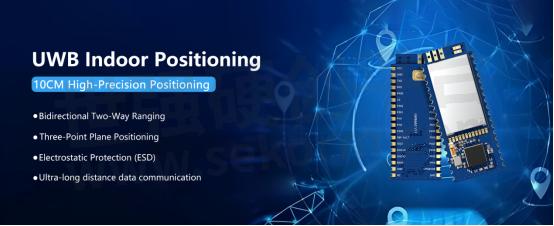
UWB3000F27 and UWB3000F00: These modules are used for two-way long-distance ranging, TDoA (Time Difference of Arrival), and PDoA (Phase Difference of Arrival) systems, with positioning accuracy up to 10 centimeters.
UWB650 Module: This module integrates data communication, double-sided two-way ranging (DS-TWR), and three-point planar positioning functions using UWB technology. It supports communication distances of over 1 KM in open environments, making it suitable for long-distance ranging applications.
Anti-Interference Capability
Bluetooth Positioning: Bluetooth technology operates in the 2.4 GHz frequency band, making it susceptible to interference from other devices such as Wi-Fi and microwave ovens, which can affect positioning accuracy and stability.
NiceRF Bluetooth 5.2 protocol utilizes SILICON LABS' EFR32BG22C224 SOC chip. It features low power consumption, small size, long transmission distance, and strong anti-interference capabilities.
UWB Positioning: UWB technology uses an ultra-wide frequency band, offering strong anti-interference capabilities. It can provide stable positioning services in complex environments and is less likely to be affected by other wireless devices.
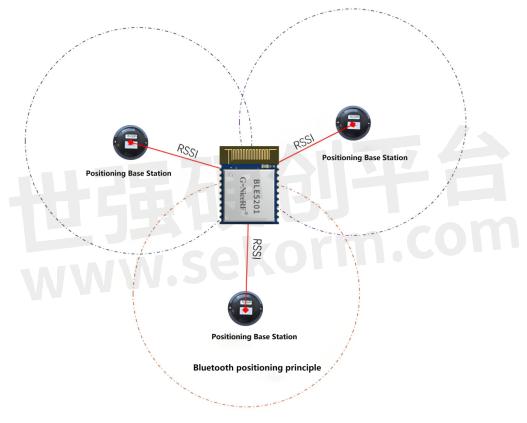
Data Transmission Speed
Bluetooth Positioning: Bluetooth Low Energy (BLE) is primarily designed for low power consumption, typically resulting in lower data transmission rates.
UWB Positioning: UWB technology not only provides high-precision positioning but also supports high data transmission rates, making it suitable for applications that require the simultaneous transmission of large amounts of data and precise location tracking.
Synchronization Mechanism
Bluetooth Positioning: Synchronization between Bluetooth devices typically relies on communication between the master and slave devices, which may introduce some time delay.
UWB Positioning: UWB uses a time synchronization mechanism, achieving precise synchronization between devices through high-precision timestamps of ultra-wideband signals.
Deployment Density
Bluetooth Positioning: Due to the accuracy of Bluetooth positioning being significantly affected by signal strength and interference, a high number of Bluetooth beacons (Beacons) are needed to cover the target area. This can lead to high-density deployment, especially in large or complex environments.
UWB Positioning: UWB positioning systems typically require less infrastructure to cover the same area because their high precision and strong anti-interference capabilities can provide stable positioning services over a larger range. This makes UWB systems more cost-effective for large-scale deployments.
Standby Duration
Bluetooth Positioning: A significant advantage of Bluetooth technology is its low power consumption. Devices using BLE can typically operate for extended periods, with standby times reaching several months or even years, making it well-suited for scenarios requiring long-term continuous operation.
UWB Positioning: UWB generally involves high power consumption for ultra-long-distance modules, making it less advantageous in terms of standby duration. UWB modules are better suited for high-precision positioning tasks of shorter duration.
Application Scenarios
Bluetooth Positioning: Widely used in indoor navigation, personnel tracking, asset management, smart homes, and customer behavior analysis in retail stores. This is mainly due to its low cost, low power consumption, and convenient deployment characteristics.
UWB Positioning: Due to its high precision and reliability, UWB is widely used in industrial automation, robotic navigation, drone positioning, sports and medical tracking, and high-precision asset management, among other fields requiring accurate positioning.
- |
- +1 赞 0
- 收藏
- 评论 0
本文由雪飘梦飞转载自G-NiceRF Official Website,原文标题为:A Comprehensive Comparison of Bluetooth and UWB (Ultra-Wideband) Technologies: A Guide to Precise Positioning,本站所有转载文章系出于传递更多信息之目的,且明确注明来源,不希望被转载的媒体或个人可与我们联系,我们将立即进行删除处理。
相关推荐
【技术】多协议无线SoC解决方案白皮书:将智能互联照明带回家
何为 LED 灯泡增添智能连接性所需的要素,包括各种关键无线技术的比较,以及业界首创的多协议无线SoC解决方案。
【经验】EFR32xg SoC的Bin,S37,EBL和HEX目标文件有什么不同?
我们在使用Silicon Labs EFR32xg SoC开发 EmberZnet 时发现,当我们的固件编译结束之后可以得到各种各样的结果,包括 S37,GBL,HEX和BIN格式的目标文件,那么这些文件到底有什么区别的?在什么情况下我们要用到对应的文件呢?本文将具体介绍。
【经验】教你如何修改EFR32MG系列SOC ZigBee工程的CCA阈值
Silicon Labs公司的EFR32MG系列SOC单芯片已被广泛应用于智能家居市场产品中。对于ZigBee协议栈,无论单播还是广播,数据包在发送之前MAC层会检测CCA(Clear Channel Assessment ),如果检测到接收信号强度低于阈值,数据包就不发送。因此需要根据实际情况来设置合理的CCA阈值,本文就指导大家来设置EFR32MG系列SOC的CCA阈值。
测量SiWx917 Wi-Fi SoC的功耗和吞吐量
描述- 本文介绍了SiWx917 Wi-Fi 6 + 低功耗蓝牙SoC的功耗和吞吐量特性。文章详细阐述了SiWx917的功耗优化设计,包括低功耗模式、动态电压/频率缩放和智能电源管理等,并通过实际测试数据展示了其超低功耗性能。此外,文章还介绍了SiWx917在Wi-Fi摄像头设计中的应用优势,包括低功耗、长电池寿命和易于开发等特点。
型号- SIWX917
【产品】支持蓝牙5.2的SoC EFR32BG22系列,可满足智能家居、消费类电子、商业和工业物联网应用需求
Silicon Labs(亦称芯科科技)新年发布的特别优化的蓝牙单芯片SoC解决方案-EFR32BG22(BG22),支持蓝牙5.2、Bluetooth® Low Energy、蓝牙网状网络和1米以下测向精度,适用于物联网产品的大量生产。该系列提供了三种蓝牙SoC产品供选择,专为满足智能家居、消费类电子、商业和工业物联网应用(包括那些需要多年电池使用寿命的应用)对价格/性能的各种要求所打造。
芯科SiWx917低功耗WiFi 6+BLE SoC用于IPC网络摄像机,支持低功耗WiFi保活功能
一些电池供电的IPC在实际应用中,往往面临功耗高、网络连接慢以及处理能力有限等挑战。SiWx917 SoC,Silicon Labs超低功耗Wi-Fi 6和蓝牙 BLE 5.4无线SoC芯片,非常适合应用。
2412061605 SIWG917 SOC和SIWN917 NCP v0.1勘误表更新
描述- Silicon Labs发布SiWG917 SoC和SiWN917 NCP的v0.1版本错误修正更新。更新内容包括对SiWG917 SoC和SiWN917 NCP的特定错误进行修正,并提供了详细的描述、受影响条件/影响、解决方案等信息。此次更新不影响产品的形式、尺寸、功能、质量或可靠性。
型号- SIWG917M100MGTBAR,SIWG917M111XGTBA,SIWG917M121XGTBA,SIWN917M100LGTBAR,SIWG917,SIWG917M111MGTBAR,SIWG917M111XGTBAR,SIWG917M121XGTBAR,SIWG917M141XGTBAR,SIWN917,SIWG917M100MGTBA,SIWN917M100LGTBA,SIWG917M110LGTBAR,SIWG917M111MGTBA,SIWG917M110LGTBA,SIWG917M141XGTBA
【经验】Matter入门指导3:基于GSDK创建Matter - SoC Lighting over Thread工程
本文主要介绍使用EFR32MG24 Breakout Board,基于GSDK创建Matter - SoC Lighting over Thread工程的方法,我们后面会使用这个工程的固件来做Matter over Thread灯设备的控制实验。
EFR32FG23 无线 SoC 产品系列数据表
描述- EFR32FG23是一款适用于智能家居、安全、照明、楼宇自动化和计量等领域的高性能无线SoC。该产品具备1GHz以下射频通信能力,提供长距离通讯且不受2.4GHz频段干扰。其核心采用32位ARM Cortex-M33处理器,集成多种外设和丰富的内存资源,同时支持多种协议和安全特性。
型号- EFR32XG23,EFR32FG23B010F128GM40-C,EFR32FG23A010F256GM48-C,EFR32FG23B010F512IM40-C,EFR32FG23A020F512GM48-C,EFR32FG23A021F512GM40-C,EFR32FG23A010F512GM48-C,EFR32FG23A010F256GM40-C,EFR32FG23B010F512IM48-C,EFR32FG23A020F512GM40-C,EFR32FG23A010F512GM40-C,EFR32FG23B021F512IM40-C,EFR32FG23A011F512GM40-C,EFR32FG23B020F512IM40-C,EFR32FG23 FAMILY,EFR32FG23A020F256GM48-C,EFR32FG23B020F512IM48-CR,EFR32FG23,EFR32FG23B020F128GM40-C,EFR32FG23B021F512IM48-C,EFR32,EFR32FG23B020F512IM48-C,EFR32FG23A020F256GM40-C
xG22无线SoC开发工具实现大批量电池供电物联网产品
Silicon Labs(芯科科技)xG22开发工具基于EFR32xG22 SoC,具有出色的物联网无线连接。这些器件将能效、无线性能、安全特性和软件堆栈完美结合,实现大批量电池供电物联网产品。
EFR32FG28无线SoC系列数据手册
型号- EFR32FG28A120F1024GM48-A,EFR32FG28A010F1024GM48-A,EFR32FG28B310F1024IM48-A,EFR32FG28A110F1024GM48-A,EFR32FG28A110F1024GM68-A,EFR32FG28B310F1024IM68-A,EFR32FG28A322F1024IM68-AR,EFR32FG28B320F1024IM68-A,EFR32FG28A122F1024GM68-A,EFR32FG28A112F1024GM68-A,EFR32FG28B312F1024IM68-A,EFR32FG28A122F1024GM48-A,EFR32FG28B312F1024IM48-A,EFR32FG28,EFR32FG28B322F1024IM68-A,EFR32FG28B320F1024IM48-A,EFR32FG28A112F1024GM48-A,EFR32FG28B322F1024IM48-A,EFR32FG28A120F1024GM68-A,EFR32FG28A010F1024GM68-A
Silicon Labs的SiWx917低功耗无线SoC,其低功耗WiFi保活的功能,显著降低智能门锁的能耗
SiWx917是Silicon Labs推出的一款支持Wi-Fi 6和蓝牙LE双模连接的低功耗无线SoC。它集成了先进的无线技术、强大的处理能力和高效的能耗管理,非常适合智能门锁对稳定性、低功耗和数据安全有着严格要求的设备。特别是SiWx917的低功耗WiFi保活的功能,在低功耗睡眠模式下,依然可以保持WiFi网络处于连接状态。
UG574:SIWX917 SoC制造实用程序用户指南
描述- 本指南详细介绍了SiWx917 SoC的制造过程,包括无安全和带安全功能的制造流程。涵盖了闪存模式选择、安全特性(如安全启动、安全密钥管理和保护、安全固件升级和调试锁定)、RF校准以及制造实用工具命令的使用。指南还提供了针对不同闪存模式和配置的具体步骤和示例。
型号- SIWG917,SIWX917
【经验】Matter入门指导4:创建Matter - SoC Light Switch over Thread工程
本文主要介绍使用Silicon Labs Matter开发套件里面的EFR32MG24 Breakout Board,基于GSDK创建Matter - SoC Light Switch over Thread工程的方法。
【经验】EFR32MG系列SOC创建ZigBee支持PTA的NCP工程操作步骤
ZigBee产品中需要网关来连接到以太网,实现手机对ZigBee设备的查看和控制。ZigBee网关中会涉及到ZigBee和WIFI两种2.4GHz的无线协议,这样就存在相互干扰的问题。Silicon Labs的EFR32MG系列SOC支持PTA共存机制,对于和WIFI的共存有较大的帮助。本文指导大家创建支持PTA的NCP工程。
电子商城
品牌:SILICON LABS
品类:Wireless Gecko SoC
价格:¥8.1764
现货: 102,628
品牌:SILICON LABS
品类:Mighty Gecko Multi-Protocol Wireless SoC
价格:¥27.0929
现货: 90,767
品牌:SILICON LABS
品类:Wireless Gecko SoC
价格:¥10.4994
现货: 50,699
现货市场
服务
配备KEYSIGHT网络分析仪,可测量无线充电系统发射机/接收机线圈的阻抗,电感L、电阻R、电感C以及品质因数Q,仿真不同充电负载阻抗下的无线充电传输效率。支持到场/视频直播测试,资深专家全程指导。
实验室地址: 深圳 提交需求>





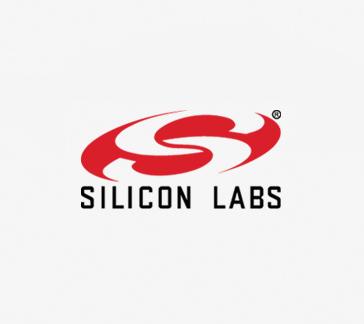
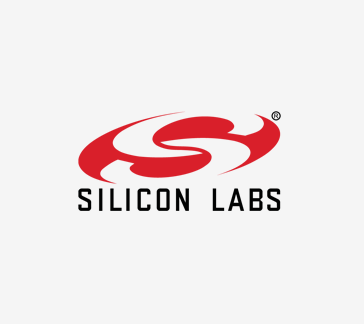

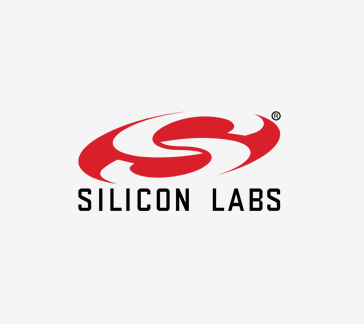

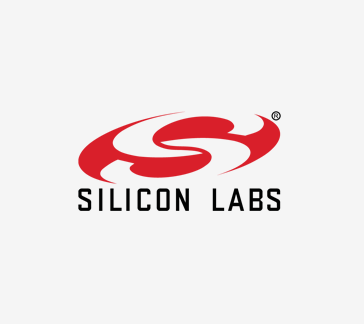


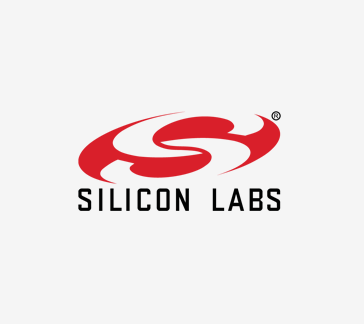


























































































































































































登录 | 立即注册
提交评论